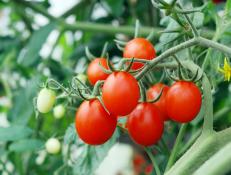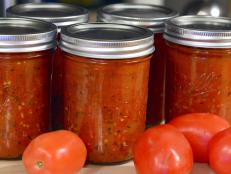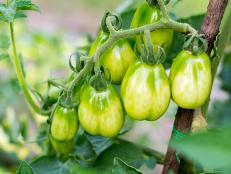Grow the Best Heirloom Tomatoes for Your Region
Make the most of your heirloom tomato efforts by growing 'maters adapted to your region.

The secret to amazing heirloom tomatoes? Start with plants naturally adapted to your region’s growing conditions. Heirloom tomatoes are often passalong plants—plants handed down (as seeds) from one generation to the next. These plants have survived for decades and sometimes hundreds of years.
When an heirloom tomato becomes famous locally, it’s already shown adaptations to local growing conditions, such as soil type, heat, humidity or average rainfall. Capitalize on those local adaptations by learning where heirloom tomatoes originate and determining if your region serves up the same growing conditions. Sometimes the name delivers a clue about where the plant first gained popularity—for instance, ‘Arkansas Traveler’ or ‘San Francisco Fog’ tomato.
Apply these same principles to heirloom tomatoes that hail from other parts of the world. Do a little digging to learn about the local growing conditions. If it’s a Russian tomato, like ‘Anna Russian’ or ‘Azoychka,’ it’s going to grow well in cooler climates. (Russian tomatoes also work well in places like Texas to get an early crop before serious heat arrives.) Also, grab a globe and trace latitude lines. If you garden at a similar latitude to a tomato’s place of origin, chances are your conditions will favor that tomato.
What happens if you try to grow heirlooms that aren’t adapted to your region? Plants may develop disease or yield poorly. Tomato flavor will very likely diminish. For instance, ‘Pink Brandywine,’ developed in North Carolina, doesn’t bring the same punch of delicious tomato flavor when it’s grown in a cool summer-spot like Oregon.
To get started with heirloom tomatoes, look for these regionally adapted tomatoes at local plant swaps, garden centers and regional plant sales.

Heirloom Tomatoes for the Northeast
‘Amish Paste Roma’ (above), ‘Black Prince,’ ‘German Johnson,’ ‘Golden Jubilee,’ ‘Heinz Classic,’ ‘Marglobe,’ ‘Mortgage Lifter,’ ‘Pink Brandywine,’ ‘Red Beefsteak,’ ‘Rutgers’
Heirloom Tomatoes for the Mid-Atlantic
‘Amish Paste,’ ‘Arkansas Traveler,’ ‘Cherokee Purple,’ ‘German Johnson,’ ‘Mortgage Lifter,’ ‘Pineapple,’ ‘Red Beefsteak,’ ‘Rutgers’ (‘Brandywine’ is a given in the Mid-Atlantic, but its susceptibility to disease can be problematic—many gardeners are trying ‘Brandy Boy,’ a modern grafted tomato.)
Heirloom Tomatoes for the South
‘Arkansas Traveler,’ ‘Black Krim,’ ‘Black from Tula,’ ‘Cherokee Purple,’ ‘German Johnson,’ ‘Homestead,’ ‘Marglobe,’ ‘Marion,’ ‘Mr. Stripey,’ ‘Red Beefsteak,’ ‘Yellow Pear’
Heirloom Tomatoes for the Midwest
‘Amish Paste,’ ‘Black Krim,’ ‘Cherokee Purple,’ ‘Marglobe,’ ‘Mortgage Lifter,’ ‘Nebraska Wedding,’ ‘Pink Brandywine,’ ‘Red Beefsteak,’ ‘San Marzano,’ ‘Yellow Pear’
Heirloom Tomatoes for Texas
‘Black Calabash,’ ‘Black from Tula,’ ‘Black Krim,’ ‘Black Sea Man,’ ‘Brandywine Sudduth’ (aka ‘Pink Brandywine’), ‘Cherokee Purple,’ ‘Green Zebra,’ ‘Nyagous,’ ‘Persimmon,’ ‘Porter,’ ‘Yellow Pear’
Heirloom Tomatoes for the West
‘Ace 55,’ ‘Bradley,’ ‘Cherokee Purple,’ ‘Homestead,’ ‘Paul Robeson,’ ‘San Francisco Fog’
Heirloom Tomatoes for the Northwest
‘Black Krim,’ ‘Cherokee Purple,’ ‘Golden Jubilee,’ ‘Heinz Classic,’ ‘San Francisco Fog,’ ‘Seattle’s Best Heirloom,’ ‘True Black’ (a ‘Brandywine’), 'Willamette,' ‘Yellow Pear’
Heirloom Tomatoes for the Southwest
‘Amish Paste,’ ‘Black Cherry,’ ‘Brandywine,’ ‘Beefsteak,’ ‘Cherokee Purple,’ ‘Paul Robeson,’ ‘Rutgers,’ ‘San Marzano,’ ‘Yellow Pear’














































